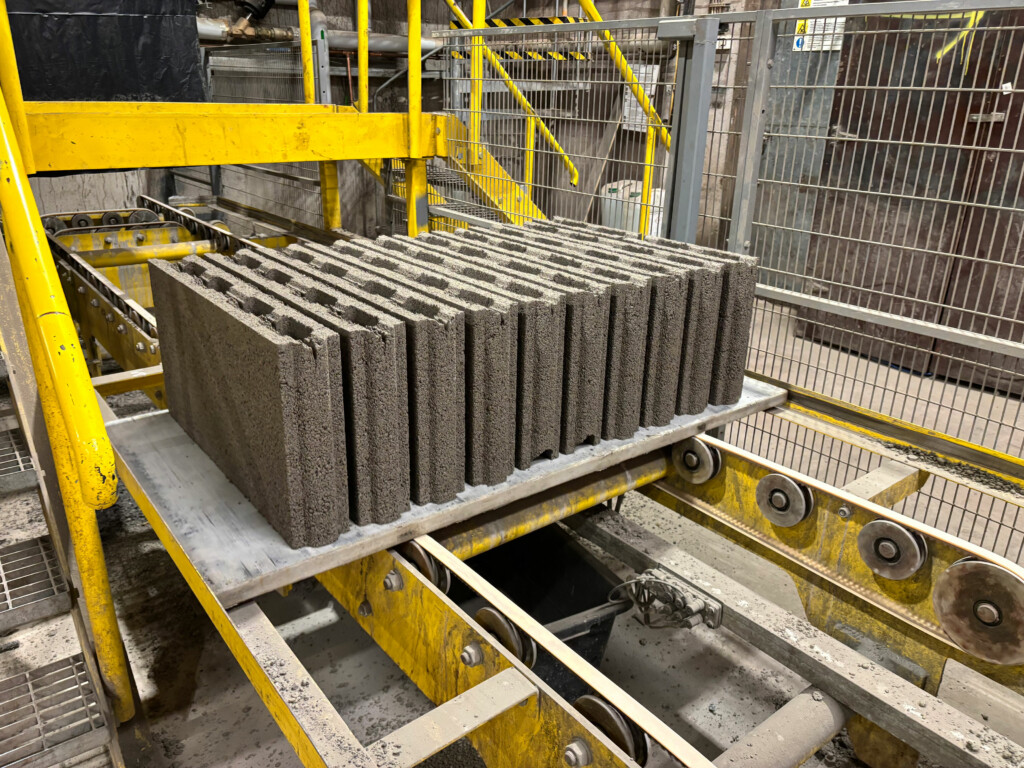
Soletair Power and Carbonaide Partner to Produce Concrete from Carbon Dioxide
Published by Todd Bush on January 24, 2025
Soletair Power and Carbonaide join forces to deliver net-negative emissions with breakthrough carbon capture and concrete innovation.
Lappeenranta, January 23, 2025
Achieving net zero isn’t enough to combat climate change. To prevent catastrophic consequences and meet the IPCC’s 1.5°C warming target, we must actively remove carbon dioxide from the atmosphere. Buildings—responsible for nearly 40% of global CO₂ emissions—pose a critical challenge, but also a massive opportunity for climate-positive solutions.
Soletair Power and Carbonaide are taking decisive steps to reverse these emissions, transforming harmful CO₂ into valuable materials. Soletair Power’s innovative technology captures CO₂ directly from the air flowing through building ventilation systems, while Carbonaide uses direct air-captured CO₂ to produce net-negative concrete—replacing traditional cement without compromising quality. Together, these technologies are “breathing for the planet.”

_Soletair Power Delivers Direct Air Captured CO2 to Carbonaide_
>> In Other News: California Energy Commission Seeks Input for Carbon Management Hub Development
Reversing Emissions in Construction
In December 2024, Carbonaide successfully produced net-negative concrete products for the construction industry by utilizing CO₂ captured by Soletair Power. This innovation not just reduces reliance on high-carbon cement, but also transforms concrete into a permanent carbon sink—a process that both lowers production costs and locks CO₂ away for good.
“We are solving two problems at once,” said Tapio Vehmas, CEO of Carbonaide. “By reducing cement use, our customers will benefit from significant cost savings but also gain competitiveness in their business while EU ETS regulations are tightening. At the same time, we ensure that captured CO₂ stays out of the atmosphere for good.”
“This partnership brings out the best in both technologies,” added Petri Laakso, CEO of Soletair Power. “It’s like turning harmful emissions into valuable solid minerals—creating value through cost reduction while closing the loop for our air-captured CO2.”

_Cement replaced and DAC CO2 in use at Carbonaide_
Innovation Meets Practicality
Soletair Power’s patented direct air capture technology integrates with building ventilation systems, captures CO₂ from air and saves energy in a cost-effective way while improving urban air quality. Meanwhile, Carbonaide’s method enables captured CO₂ to replace cement in precast concrete production, converting one of the world’s largest carbon sources into a tool for long-term carbon storage.
A Viable Path to Net-Negative Buildings
Together, these technologies create a tangible path toward net-negative emissions in the built environment. By capturing CO₂ directly from buildings and storing it in durable, high-quality concrete, Soletair Power and Carbonaide are addressing industrialization’s damage head-on—and turning it into opportunity.
The future of construction isn’t just carbon neutral—it’s climate positive.
About Soletair Power
Soletair Power is a Finnish company focusing on developing massively scalable modular technologies to capture carbon dioxide (CO2) from the air. The main product is a direct air capture (DAC) system designed to be integrated with existing building ventilation systems (HVAC). This helps building owners reduce their carbon footprint through captured and avoided CO2 emissions and meet sustainability goals. Captured CO2 can be permanently stored and thus create a “carbon sink” effect for the building. S_oletair Power_ has moved beyond the development stage and already delivered several DAC systems.
About Carbonaide_
Carbonaide_‘s carbon-curing technology, originating from VTT, the Technical Research Centre of Finland, can mineralize approximately 100kg CO₂ per cubic meter of concrete. The technology not only permanently stores CO₂ but also contributes to the decarbonization of the concrete industry by replacing cement and making carbon-negative concrete a reality.
Subscribe to the newsletter
Daily decarbonization data and news delivered to your inbox
Follow the money flow of climate, technology, and energy investments to uncover new opportunities and jobs.
Latest issues
-
North America’s Carbon Removal Year in Review: Winners, Losers, Surprises
Inside This Issue 🌎 North America's Carbon Removal Year in Review: The Deals, Policies, and Milestones That Shaped 2025 🚢 Hapag-Lloyd And North Sea Container Line Win ZEMBA Second E-Fuel Tender 🪨 ...
-
CCS Just Got Cheaper Than Anyone Expected
Inside This Issue 🧪 Shrinking the CCS Energy Penalty: A Molten Borate Breakthrough Promises Viability for Hard-to-Abate Canadian Oil & Gas 👤 Syntholene Energy Corp Appoints Former CEO of Carbo...
-
The CO₂ Pipeline Everyone Said Couldn’t Happen
Inside This Issue 🛠️ Tallgrass Found the CO2 Pipeline Formula Others Missed 🚂 HyOrc & Zeltech Advance Practical Locomotive Retrofit Pathway as U.S. Rail Emissions Face Growing Scrutiny 💰 Secre...
Company Announcements
-
Gevo, Inc. (NASDAQ: GEVO) announced that BeZero Carbon Ltd., a global carbon rating agency, has upgraded its rating for the Gevo North Dakota (GND) facility, which has carbon capture and storage, t...
-
Electric Hydrogen Selected By Synergen Green Energy For 240MW U.S. Green Ammonia Project
Electric Hydrogen, U.S. manufacturer of advanced electrolyzer plants, announced it has been selected by Synergen Green Energy Inc., a leading commercial-scale developer of green hydrogen and ammoni...
-
Neste and the Cathay Group have agreed on the supply of Neste MY Sustainable Aviation Fuel™ for the group’s aviation operations across three major aviation regions: Europe, the United States, and A...
-
Wicomico County Selects Waga Energy To Upgrade Landfill Gas To RNG In Maryland
Wicomico County has selected Waga Energy to build, own, operate, and maintain an RNG production unit at the Newland Park Landfill in Salisbury, Maryland. When in operation, the plant will provide m...